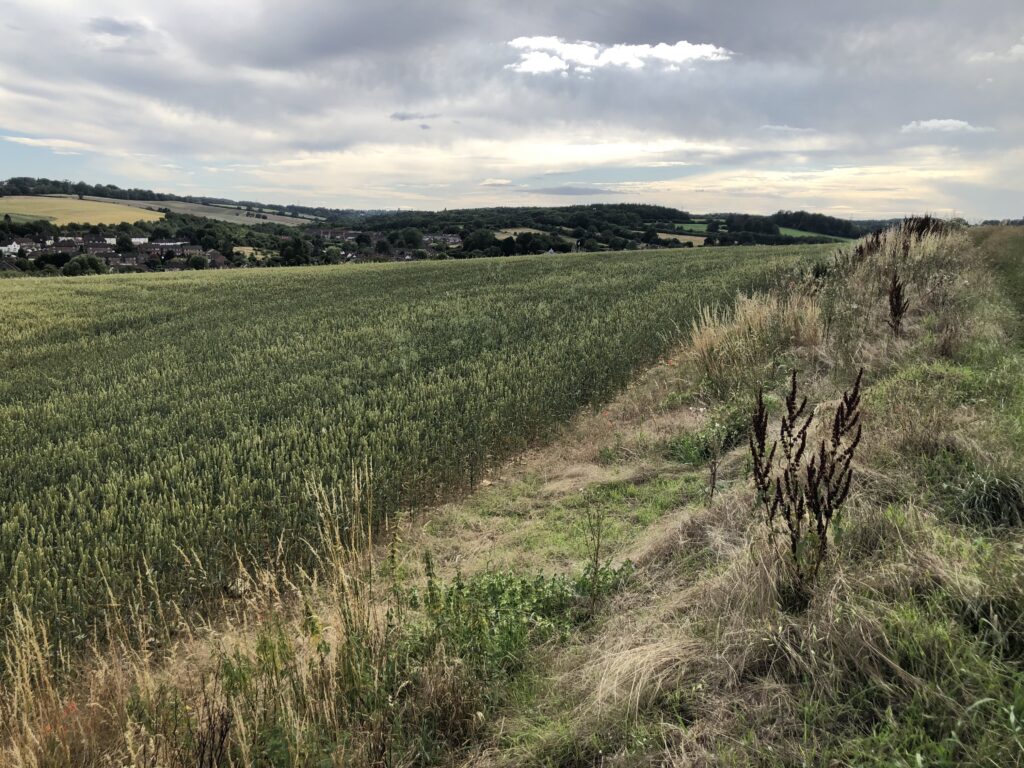Religious Heresy and Public Executions: The History of the Amersham Martyrs Memorial, Buckinghamshire
Tucked within the Chiltern Hills, the town of Amersham is filled with historic buildings, charming pubs, and beautiful footpaths leading deep into the countryside. While towns as old as Amersham are filled with captivating historical tales, some events from long ago inevitably shed light on the more sinister side of humanity, and Amersham’s history is no exception. Nearly 500 years ago the town was the site of a series of public executions where six individuals (five men and one woman), known today as the Amersham Martyrs, were burned at the stake on a hill overlooking the beautiful Chiltern landscape.

© Curious Archive, 2020
Lollardy and Religious Heresy in Sixteenth-Century Amersham
So what exactly did these six individuals do that warranted such a grotesque and painful death? Today, the reason appears quite mundane: they simply wanted to read The Bible in English. From a twenty-first century perspective, their request to read and worship in a language they understood (not the conventional Latin) seems fairly reasonable. But during the sixteenth-century, indulging in such a practice was considered a direct attack against the Church.
The Amersham martyrs were Lollards, followers of John Wycliffe (c. 1328 – 1384) who was known for his protests against the wealth of the Catholic Church and for his translation of the Bible from Latin into English. Wycliffe believed that Christians should be looking directly to The Bible for the Word of God instead of relying on priests and other high ranking members of the Church. Wycliffe died on 31 December 1384 from complications following a stroke and on 4 May 1415 he was declared a heretic by the Council of Constance. His writing was banned and his corpse was exhumed and removed from consecrated ground before being burned and disposed of in the River Swift.
This extreme motion made it quite clear that the Church would not tolerate the distribution of Wycliffe’s teachings and that anyone following in his footsteps would be punished. English translations of The Bible continued to be seen as heresy leading up to the English Reformation in the sixteenth-century, but these translations continued to be distributed and consumed by followers of Wycliffe.
It was inevitable that within this dangerous religious climate the Amersham Lollards would be caught and persecuted and in 1521, Thomas Barnard, James Morden, John Scrivener, Robert Rave, Thomas Holmes, and Joan Norman were burned at the stake for their demand of religious liberty. But the town of Amersham continues to remember them, keeping their names and story of martyrdom alive almost 500 years later.
The Amersham Martyrs Memorial
In 1931, the Amersham Martyrs Memorial was erected by the Subscribers of the Protestant Alliance (Henry Fowler, General Secretary) and Mrs E. M. Rowcroft. According to the memorial’s inscription, it was placed 100 yards to the right of the spot where the martyrs were burned. Listed on the memorial are names of individuals martyred at Amersham as well as names of Amersham worshippers that were martyred elsewhere. The following text has been transcribed from two faces of the memorial for clarity:
THE NOBLE ARMY OF MARTYRS PRAISE THEE
AMERSHAM MARTYRS
In the shallow depression at a spot 100 yards left of this monument seven Protestants, six men and one woman were burned to death at the stake. They died for the principles of religious liberty. For the right to read and interpret the Holy Scriptures and to worship God according to their consciences as revealed through God’s Holy Word.
Their Names Shall Live For Ever
William Tylsworth, Burned 1506
(Joan Clark, his married daughter, was compelled to light the faggots to burn her father)
Thomas Barnard, Burned 1521
James Morden, Burned 1521
John Scrivener, Burned 1521
(His children were compelled to light their father’s pyre)
Robert Rave, Burned 1521
Thomas Holmes, Burned 1521
Joan Norman, Burned 1521
The following men, worshippers at Amersham, were martyred in other places
Robert Cosin of Gt Missenden, Burned at Buckingham, 1506
Thomas Chase, Strangled at Woburn Bucks. His body was buried at Norland Woods, 1514
Thomas Man, Burned at Smithfield, 1518
Thomas Harding, Burned at Chesham, 1532

© Curious Archive, 2020
A gruesome detail on the memorial mentions two men, William Tylsworth (d. 1506) and John Scrivener (d. 1521), having been burned at the stake by the hands of their own children against their will. This emphasises the performative aspect of public executions, heightening the already horrific drama by directly punishing family members alongside the accused. The location of the executions, high in the hills above the town, was certainly strategic with the smoke filled landscape acting as a stark warning to those considering similar crimes.

© Curious Archive, 2020
This bleak period of history within an otherwise idyllic countryside town continues to be in the mind of Amersham locals today. Amersham Museum has plenty of information available on the martyrs both in the exhibition space as well as online. A plaque has recently been erected within the Old Amersham Market Hall commemorating the deaths in both English and Latin. And the town will be performing the fifth staging of their community play in remembrance of the 500th anniversary of martyrdom in 2021 in an inclusive and educational promenade performance.
Accessing the Memorial
When visiting Old Amersham, the memorial is accessible via public footpath running behind St. Mary’s cemetery along the River Misbourne towards Station Road. Following a connecting footpath up the hill in the field behind the houses will eventually lead to the small grove where the memorial is located.
After spending time at the memorial, it’s highly recommend to continue the climb to enjoy the sweeping landscape views of Amersham and the Chiltern Hills from the top of Rectory Hill.

© Curious Archive, 2020




